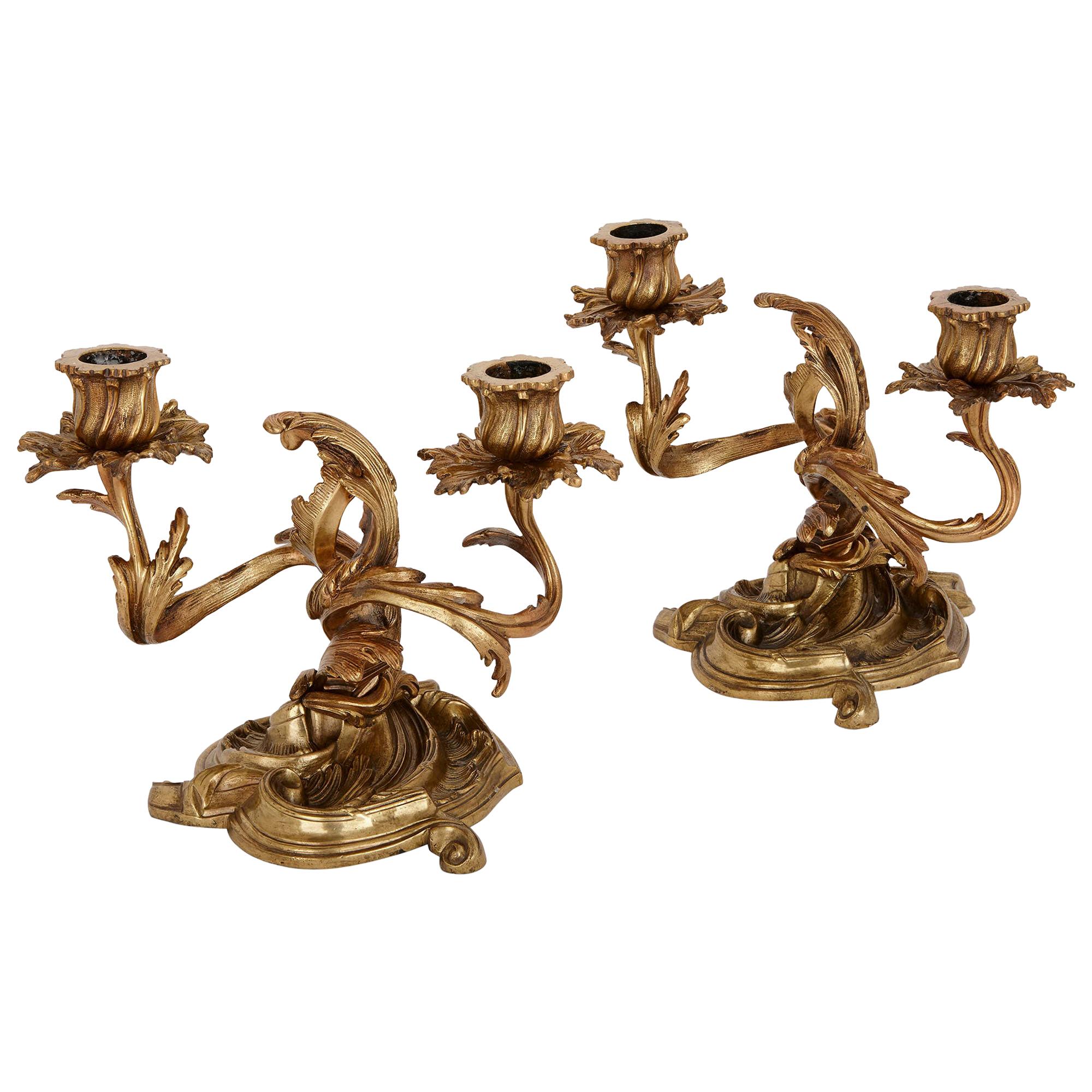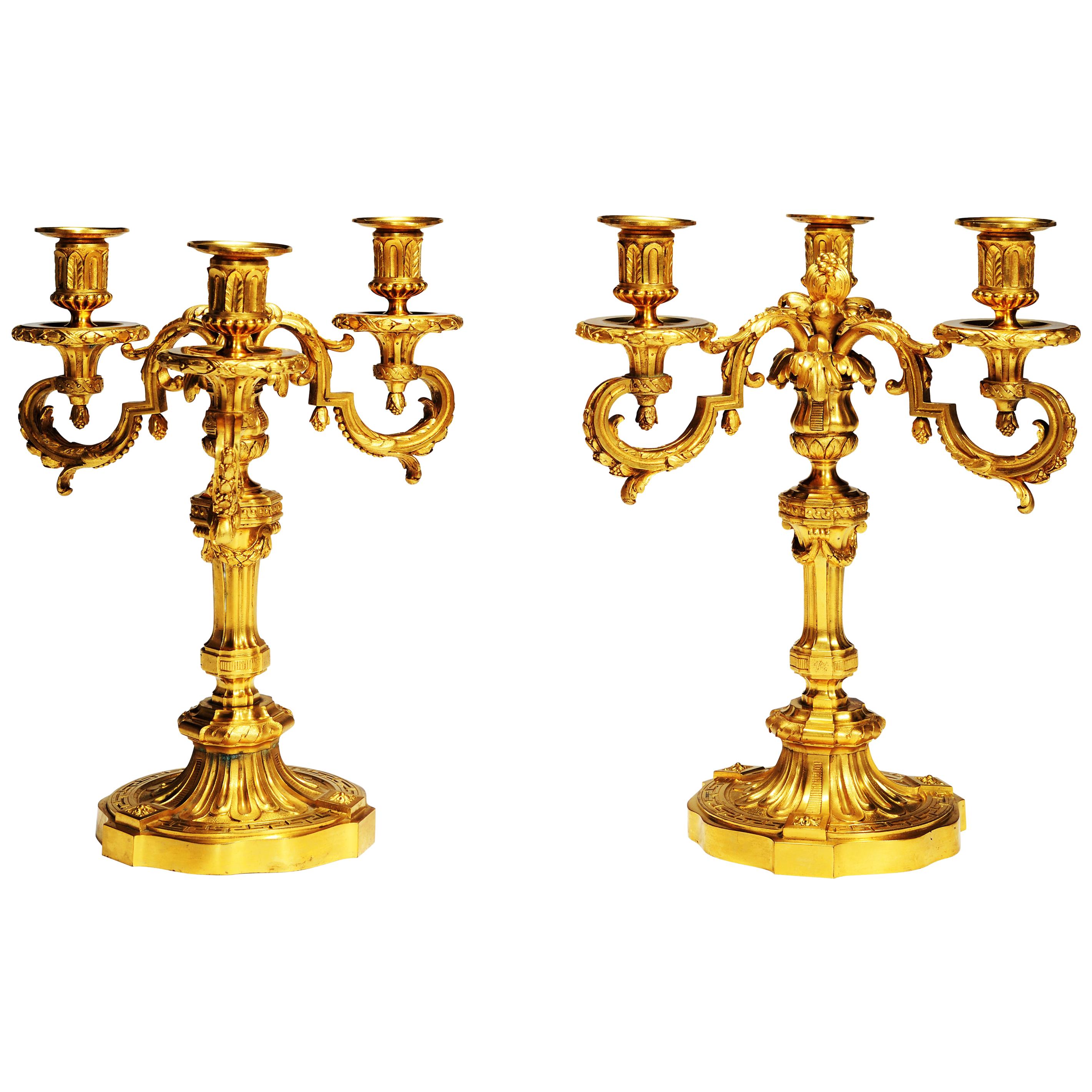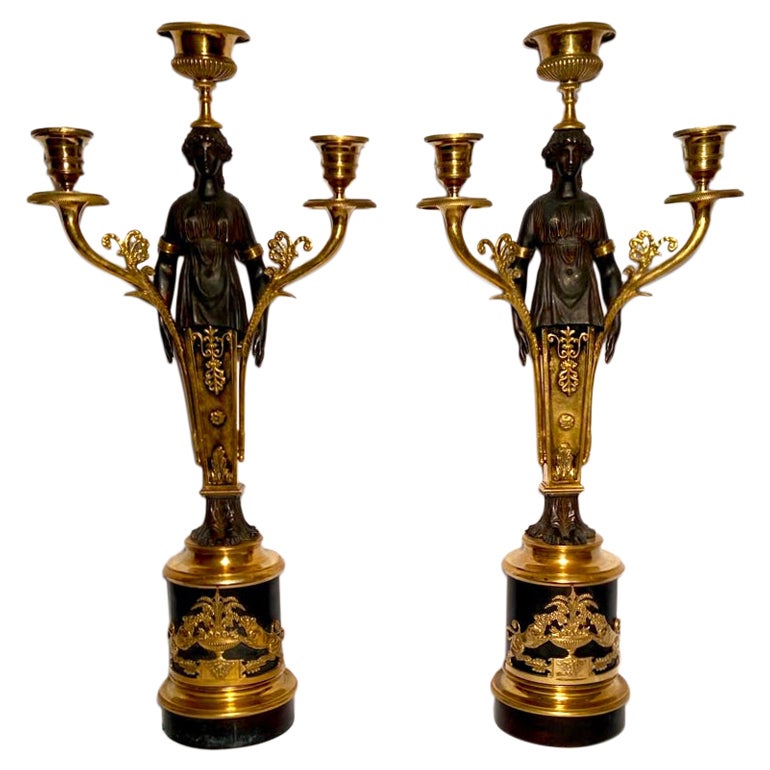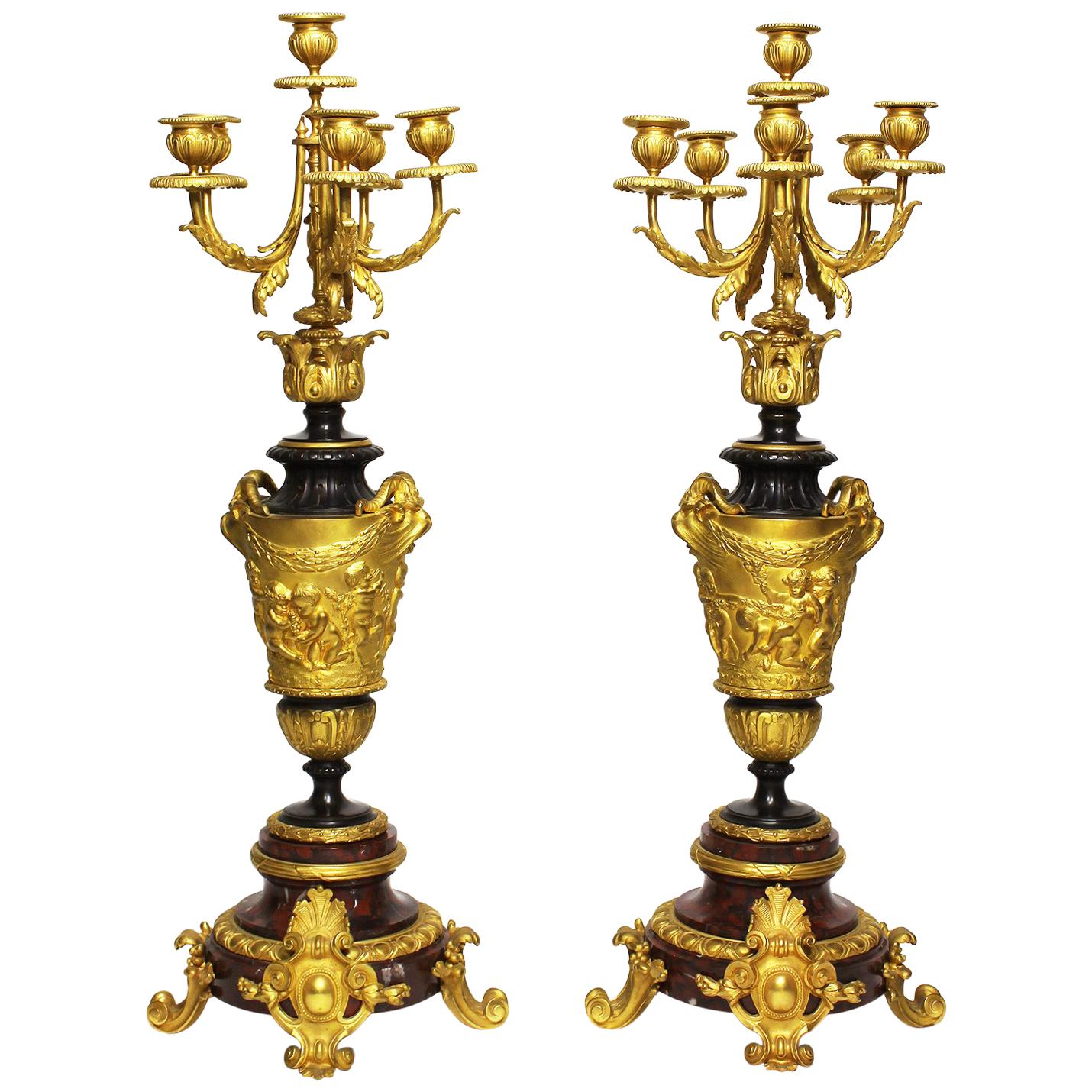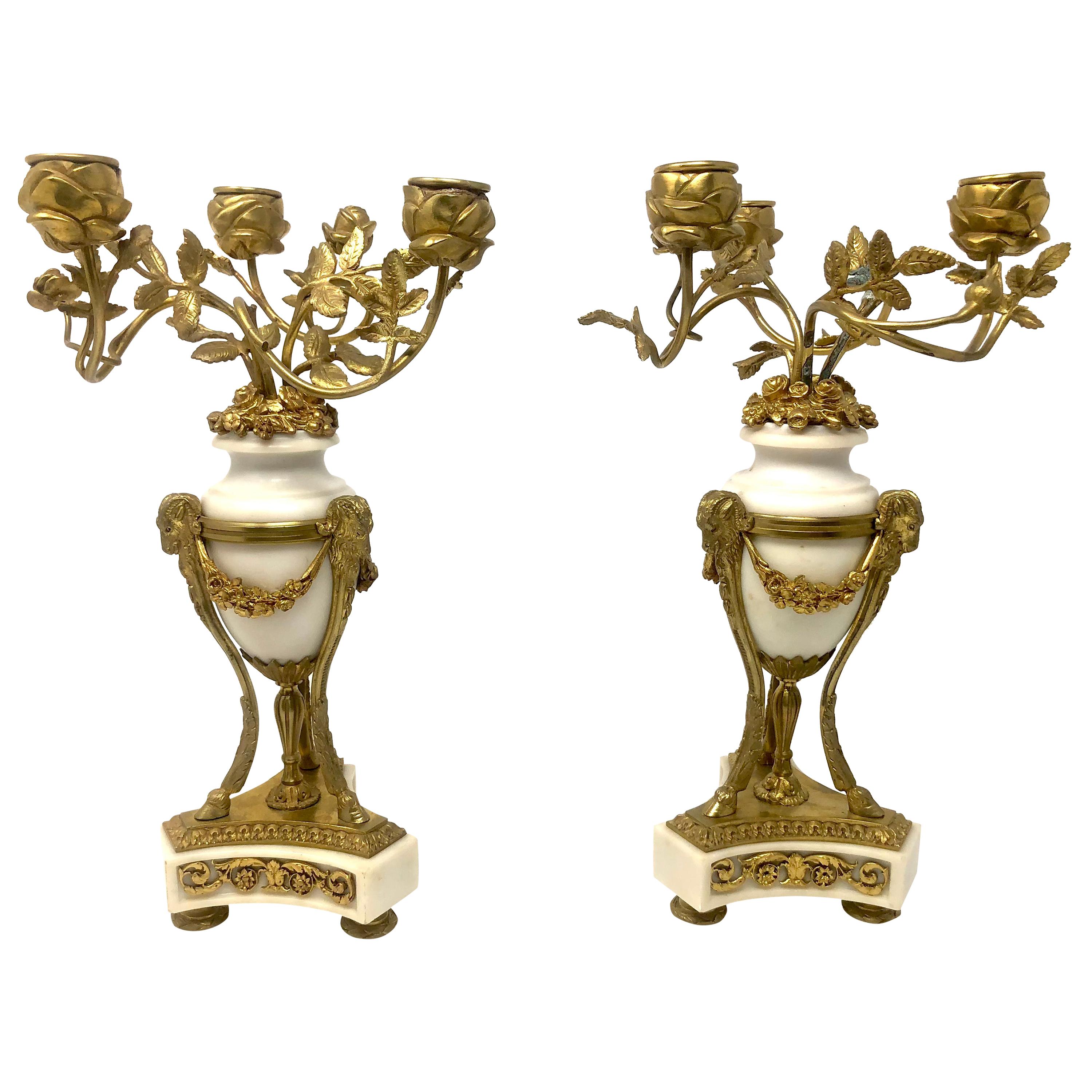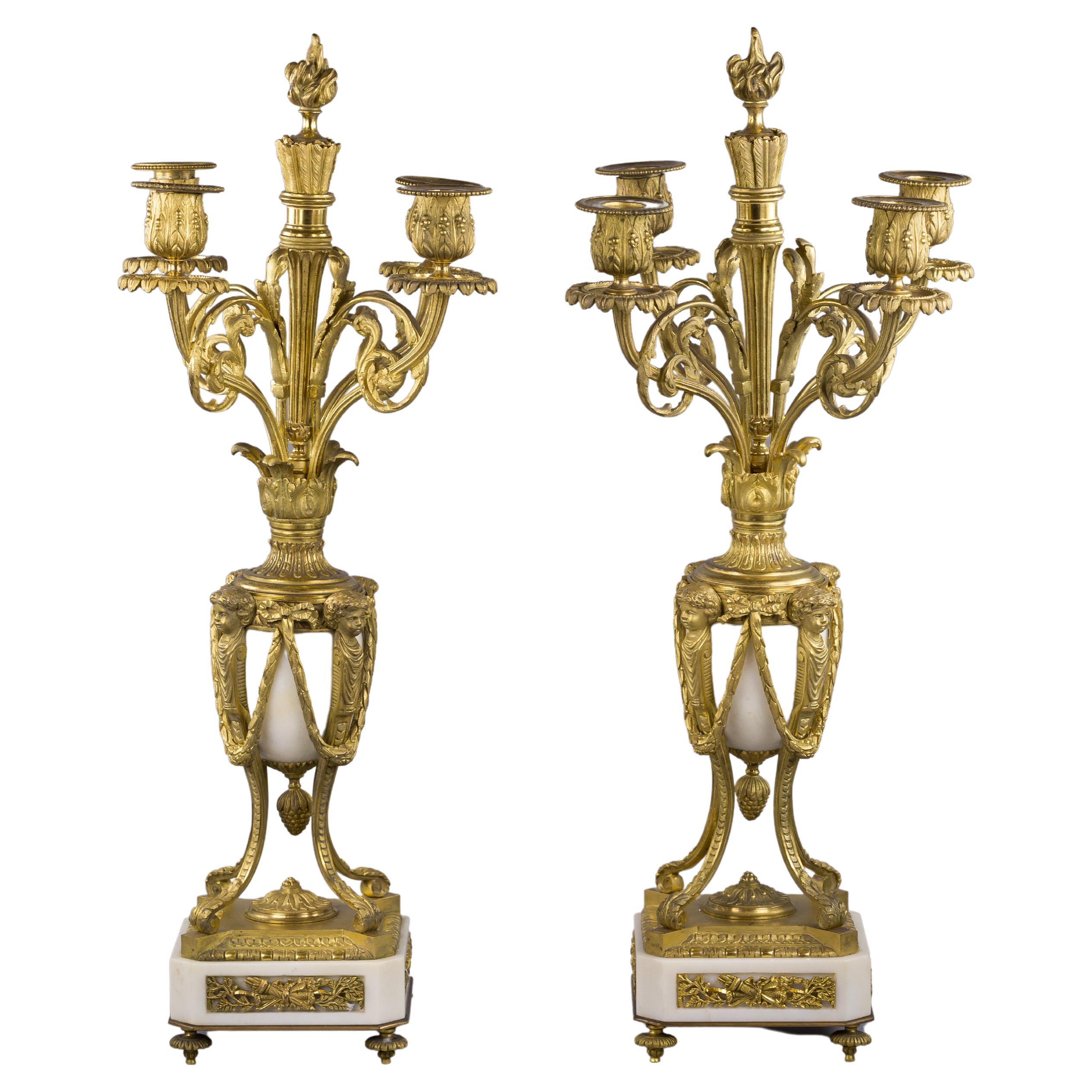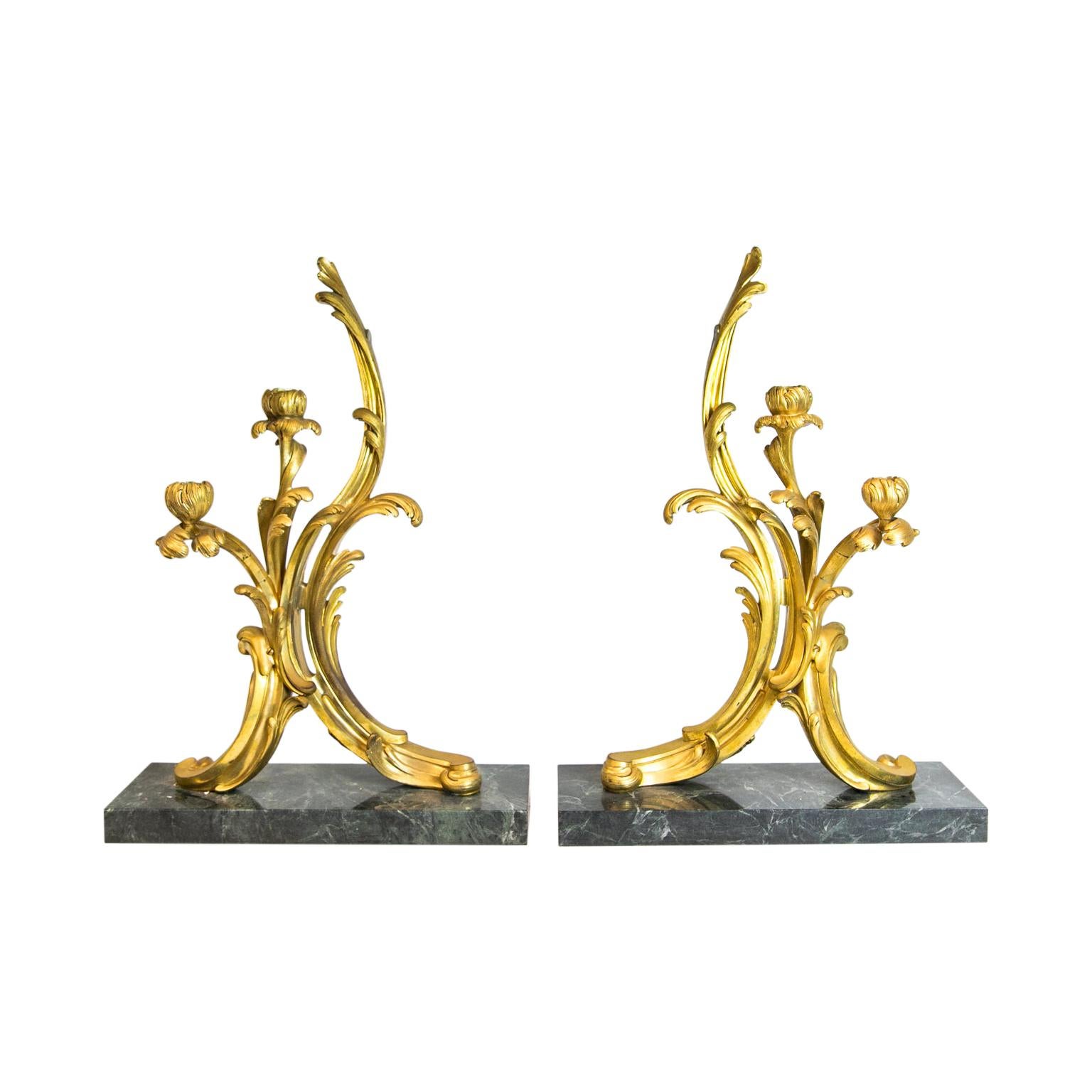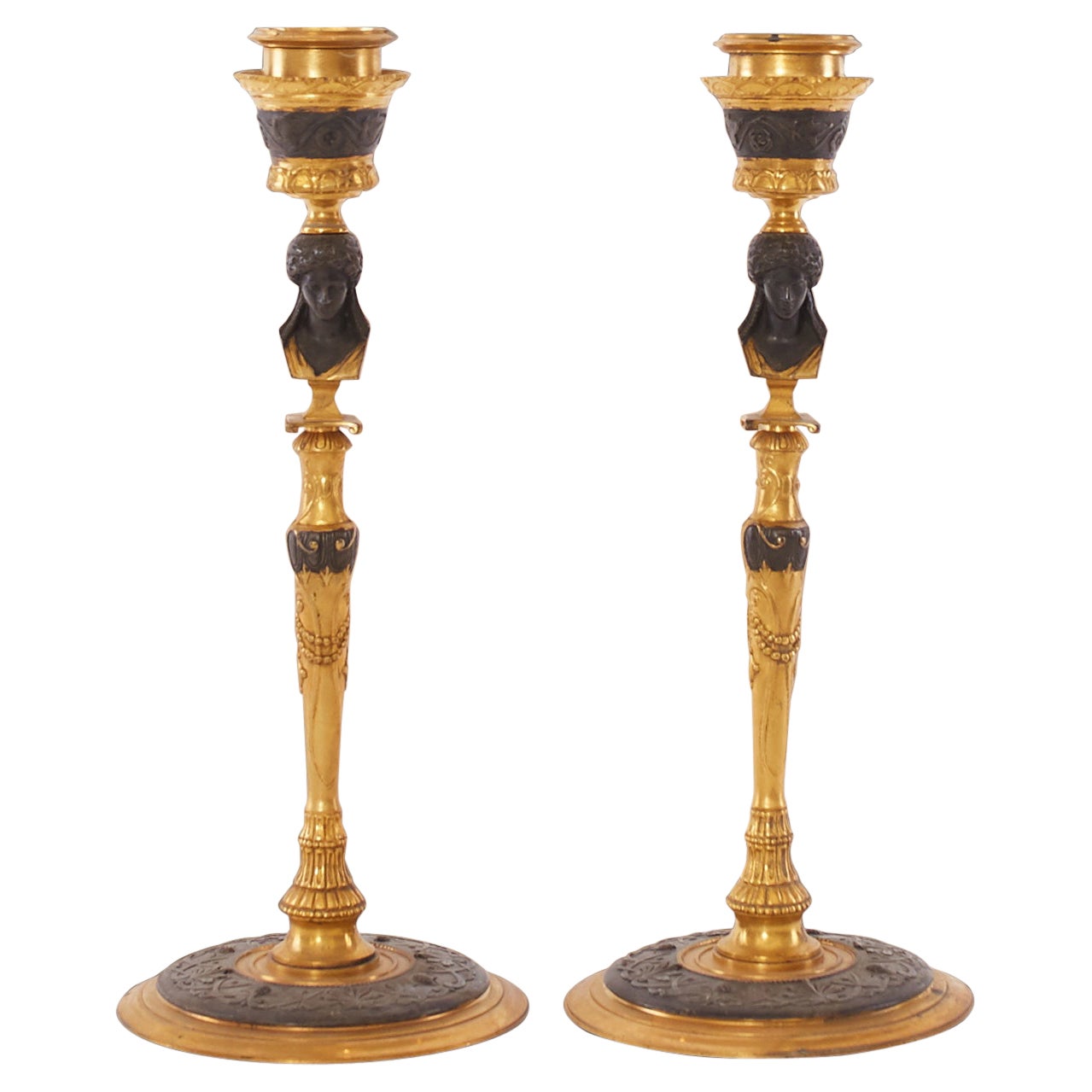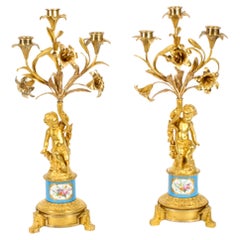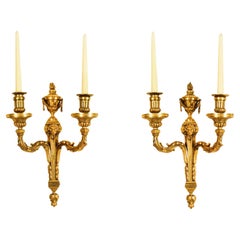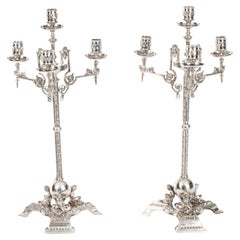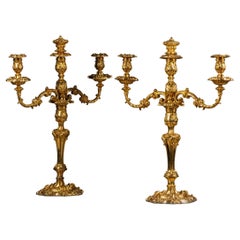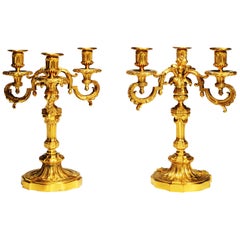
Antique Pair of Rococo Revival Ormolu Candelabra, circa 1860
View Similar Items
Want more images or videos?
Request additional images or videos from the seller
1 of 11
Antique Pair of Rococo Revival Ormolu Candelabra, circa 1860
About the Item
About the Seller
5.0
Platinum Seller
These expertly vetted sellers are 1stDibs' most experienced sellers and are rated highest by our customers.
Established in 1983
1stDibs seller since 2012
1,199 sales on 1stDibs
Typical response time: 1 hour
Associations
LAPADA - The Association of Arts & Antiques Dealers
More From This SellerView All
- Antique Pair Sevres Bleu Celeste Porcelain & Ormolu Candelabra 19th CLocated in London, GBA pair of late 19th century French porcelain and ormolu mounted three light candelabra, each with floral and leaf branches above cherubic central column, to floral painted porcelain ...Category
Antique 1860s French Candelabras
MaterialsOrmolu
- Antique Pair Regency Revival Ormolu Wall Lights Appliques Mid 19th CenturyLocated in London, GBThis is a fine pair of antique Regency Revival twin branch ormolu wall candle lights dating from Circa 1850. The wall lights feature torch urn shaped tops above tapering bodies with...Category
Antique 1850s Regency Revival Candle Lamps
MaterialsOrmolu
- Antique Pair Victorian 5 Light Candelabra James Dixon 19th CLocated in London, GBThis is a stunning pair of English antique Neo Classical design Victorian silver plated, five light, four-branch table candelabra, circa 1880 in date, and each bearing the makers mar...Category
Antique 1880s Candelabras
MaterialsSilver Plate
- Antique Pair Ormolu & Sevres Porcelain Two Branch Wall Lights Sconces 19th CLocated in London, GBThis is a stunning Antique pair of Sevres porcelain and ormolu wall lights, Circa 1870 in date. They feature hand painted oval plaques depicting cherubs in clouds surrounded by flo...Category
Antique 1870s Candlesticks
MaterialsOrmolu
- Antique Adam Revival Pair Decorative Triple Branch Wall Lights 19th CenturyLocated in London, GBThis is a stunning pair of Adam Revival antique gilded ormolu triple branch candle wall lights, dating from the Circa 1840. Each wall light has a tapering body, supporting a spiral ...Category
Antique 1840s Adam Style Candlesticks
MaterialsOrmolu
- Antique Pair 21inch George III Three Light Candelabra by Matthew Boulton 18th CLocated in London, GBThis is a stunning monumental pair of antique English Old Sheffield silver on copper, three light, two-branch table candelabra, circa 1790 in date, and bearing the sunburst makers ma...Category
Antique 1790s George III Candelabras
MaterialsSilver
You May Also Like
- Pair of Rococo Revival Ormolu Three-Light CandelabraLocated in Brighton, West SussexA Pair of Louis XV Style Rococo Revival Ormolu Three-Light Candelabra. Finely cast in the Rococo Revival style this fine pair of English candelabra...Category
Antique 19th Century English Rococo Revival Candelabras
MaterialsOrmolu
- Two Antique Rococo Style Ormolu CandelabraLocated in London, GBThese wonderful ormolu (gilt bronze) candelabra are fashioned in the Rococo style, which first flourished in France in the Louis XV period (1715-1774). The candelabra are characteris...Category
Antique Late 19th Century French Rococo Candelabras
MaterialsOrmolu, Bronze
$1,208 / set - Pair of French Three-Flame Candelabra Candelabra, circa 1860Located in Milano, ITPair of three-flame candelabra Cast bronze, chiselled and mercury gilded France, third quarter of the nineteenth century Height 14.96 in (38 cm) X 12.59 (32 cm) Weight 11.46 lb ...Category
Antique 1860s French Napoleon III Candelabras
MaterialsBronze
- Pair of Antique Delicate Ormolu and Crystal Candelabra, circa 1890Located in New Orleans, LAPair of antique delicate ormolu and crystal candelabra, circa 1890.Category
Antique Late 19th Century Candelabras
MaterialsCrystal, Ormolu
- Pair of American Rococo Revival Patinated Bronze Candelabras, Ca. 1825Located in New York, NYBronze, dark-brown patina, unmarked. Measures: Height: 23” Width: 14” The notion of an “American Rococo” seems a contradiction in terms. The very word rococo is as French as Camembert. It connotes a style that reigned along with Louis XV in the aristocratic decadence of the 18th Century. It was garlanded, nonchalant, associated with erotic marshmallow nudes by Francois Boucher and foppish courtiers costumed as shepherds pretending they understood Jean-Jacques Rousseau when all they really wanted was romantic dalliance in the formal gardens of Versailles. In the history of painting it produced but one great artist, Antoine Watteau. By contrast, Americans of the period are remembered as the flinty inheritors of New England Puritans, full of rectitude and having not a moment for furbelow or frippery. Such few painters as were around included hard-nosed realists like John Singleton Copley and Charles Willson Peale. Well, as it turns out, life once again acts according to the principle of paradox. There was an American rococo. It came to us indirectly via England disguised under the name Chippendale. Now for the first time the style receives comprehensive survey in the exhibition “American Rococo, 1750-1775: Elegance in Ornament.” Jointly organized by New York’s Metropolitan Museum and the Los Angeles County Museum of Art, it opens here Sundaywith a spread of some 170 works of decorative art and a conscientious catalogue with essays by Met and LACMA curators Morrison H. Heckscher and Leslie Greene Bowman. There are at least two ways of looking at the decorative arts. Connoisseurs appreciate their design and craftsmanship. Those of sociological bent examine objects of material culture for their revelations of history and the temper of the times. Actually neither view is complete without the other. Stylistically the rococo reveals a longing for intimacy in its small scale and an urge to organic nature in its love of stylized vines, tendrils, tiny flowers and seashells. If it were a new manner being promoted by Madison Avenue today it would probably be called “Baroque Lite.” There is an ease about the style that makes it airy, but it has an underlying formality that bespeaks lives of gentrified cultivation rather than beer-bellied sloth. It’s fascinating to examine the flintlock firearms on view and find these weapons of death shaped and decorated with the most exquisite care by wood carvers and metal engravers. All of this is completely consistent with the main currents of 18th-Century European thought. In France, Rousseau sang the virtues of nature and the noble savage like a present-day ecologist. In England, John Locke...Category
Antique 1820s American Rococo Revival Candelabras
MaterialsBronze
- Pair of Rococo Style CandelabraLocated in Stamford, CTA pair of French Rococo style candelabra after Claudion. Bronze set upon rouge marble base.Category
Antique 19th Century French Rococo Candle Holders
MaterialsBronze
$2,400 / set
Recently Viewed
View AllMore Ways To Browse
English Antique Candelabra
English Candelabra Antique
Brass Flower Candelabras
Pair Antique English Sconces
Antique Pair Of Sconce English
Antique Brass Candle Sconce Pair
Antique Mercury Candles
Antique Tool Holder
Pair Brass Candle 5
Metal Gilded Candelabra
Pair Silver English Candelabra
Sconces Gilt Bronze Rococo
Dolphin Candle
Pair Antique Brass Bronze Sconces
Antique English Candle Stands
5 Piece Candle Holder
Antique Gilded Candelabra
Gold Torch Sconce

